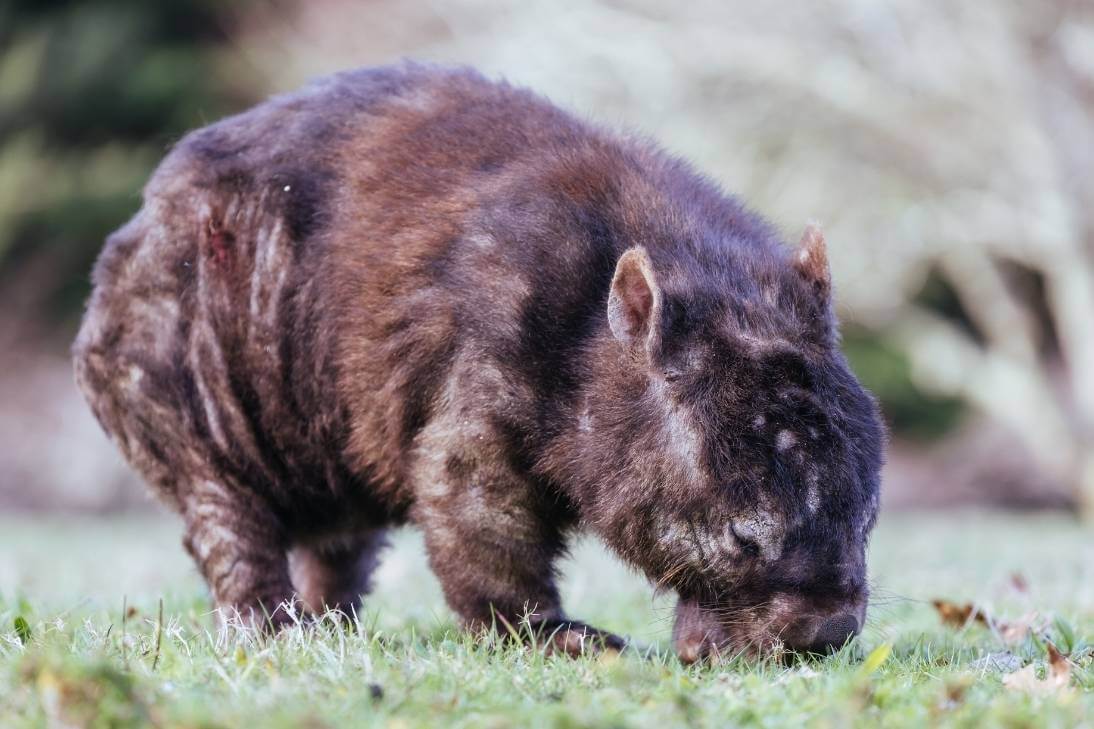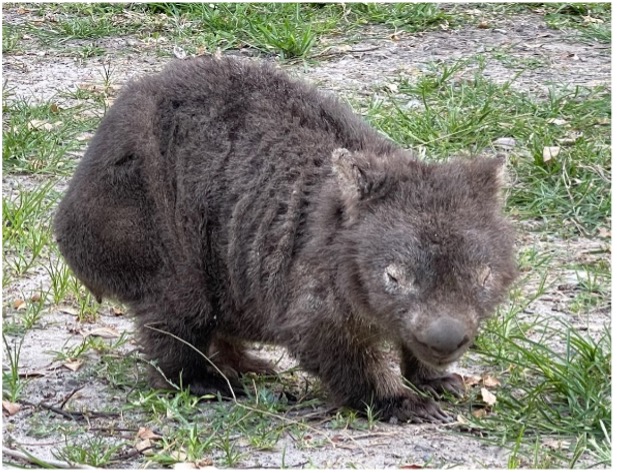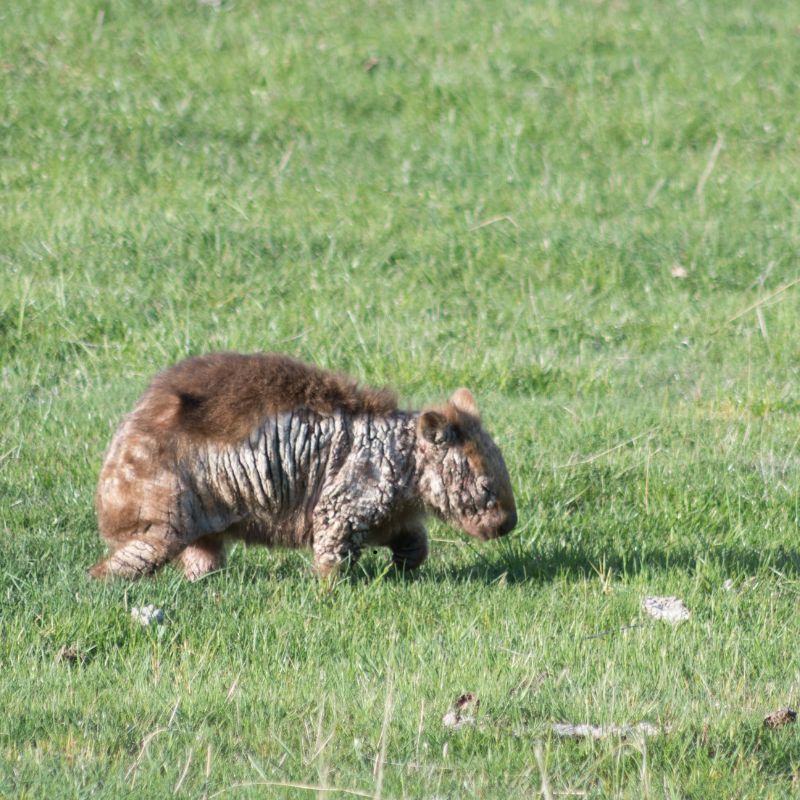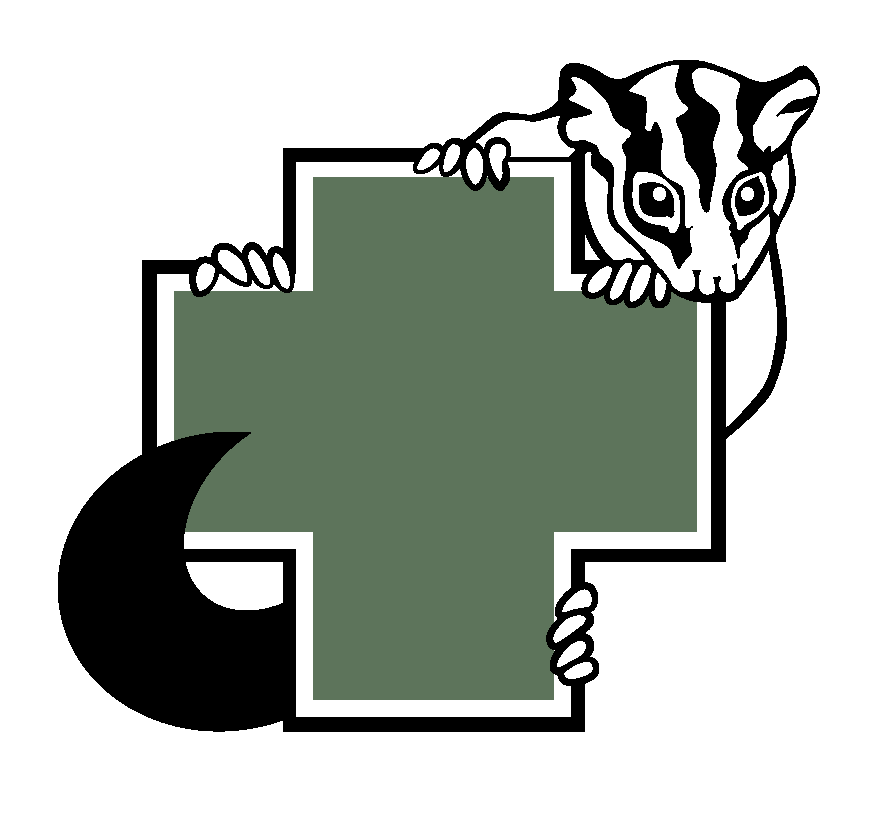OUR WORK
Mange Treatment
Treating Mange In Wombats Across The Hunter
Wombats are a much-loved part of our Australian landscape. Sadly, they face many threats caused by interactions with humans – motor vehicle accidents, dog attacks, loss of habitat, and one of the most devastating of all… mange.
Sarcoptic mange is a skin infestation caused by a burrowing mite Sarcoptes scabiei. It is possibly the biggest threat to the survival of the bare-nosed wombat. The mite was introduced by humans. Fatal if left untreated we can treat sick wombats in their home paddocks.


Signs Of Mange
For wombats, the first signs of mange appear within one to three weeks, with more severe signs appearing by four to five weeks. Suffering is severe with inflamed itchy skin, dehydration, starvation and cold. The skin eventually breaks into open sores which become infected, and fly blown. Death usually occurs two to three months after secondary bacterial infection begins. It is a slow and painful death.
Early signs of mange can be subtle and easy to miss, often showing up as a scruffy or striped appearance in the wombat’s fur along its sides. As the disease progresses, the symptoms become far more obvious and distressing, with crust forming around the ears and eyes and painful open wounds developing along the wombat’s body.
How The Treatment Works
Mange wombats can be easily treated with success. We have many mange treatment programs running with our members and the community.
Our team follows the proven protocol developed by the Wombat Protection Society of Australia. This treatment is safe, effective and widely used by licensed groups. The treatment is moxydectin delivered by pole-and-scoop or burrow flaps. The treatments supplied by Hunter Wildlife Rescue are given every five to seven days for approximately three to five weeks. Flaps are placed where the wombat walks regularly, e.g. burrow, run, culvert, bolt hole
To be effective, all active burrows in a neighbourhood must be treated. That’s why community involvement is vital – the more neighbours who help, the more wombats we can save.

Yes you can help!
All the active neighbourhood burrows need to be assessed and the active burrows and wombats treated to ensure infection is not being passed around. The more neighbours involved, the more wombats we can reach and the more effective the treatment program for the whole area.
Call Hunter Wildlife Rescue 24/7 on 0418 628 483 for any wombat out during the day, easily approached or obviously injured. A trained Hunter Wildlife Rescue member will meet with you, help you assess the wombat situation and determine the best treatment approach.
Other ways you can help
You can help save a life and make a real difference for wildlife across the Hunter region.
Frequently Asked Questions
Have questions about helping wombats? Learn what to do, how to help, and where to get support here.e



